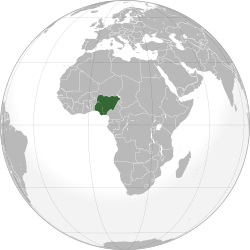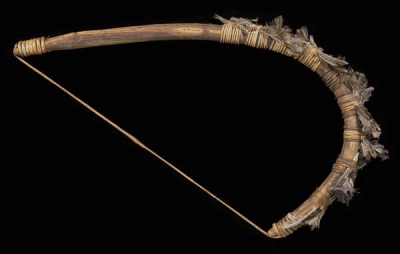Boy's Bow (1914.26.91)
 NigeriaBoy's bow from Nigeria, Africa. Collected by Percy Amaury Talbot. Given to the Museum in 1914.
NigeriaBoy's bow from Nigeria, Africa. Collected by Percy Amaury Talbot. Given to the Museum in 1914.
This small wooden bow, decorated with feathers, was used by an Ibibio boy of south-east Nigeria for shooting birds.
Defining Gender
Asymmetrical bows such as this are globally rare, although they are of a type which was historically found sporadically throughout northern and southern Nigeria. Interestingly, the form of this fowling (bird hunting) bow is quite different from the symmetrical adults' bow used by Ibibio men in hunting and warfare, and reflects a distinction between adult and childhood shooting. Although the procurement of meat through hunting and the enjoyment of archery for its own sake were important factors in the introduction of 19th century Ibibio boys to archery, just as central to the practice was the idea that these archery skills would be of direct use in later life within the realm of warfare.
Warfare in Ibibio society was traditionally organised by the Ekong war society, sacred to the war-god of the same name. When necessary, the Obong Ekong, the head of the society, declared war and Ibibio men were galvanised into organised military action. Boys were initiated into Ekong at puberty. As part of the lengthy period of initiation, they spent 7-12 weeks secluded away from their parents and home village and during this time, older members of the Ekong society trained them in the martial arts. This included hand-to-hand combat techniques, the skill of taking cover from arrows rapidly, methods of ambush, and both the use and maintenance of bows and firearms. Interestingly, although the Ibibio possessed firearms in significant numbers from the early 19th century onwards, which were used for hunting and self-defence when travelling, the bow was always the preferred weapon of war. This reflects the central importance of archery to the proper and honourable conduct of warfare.





